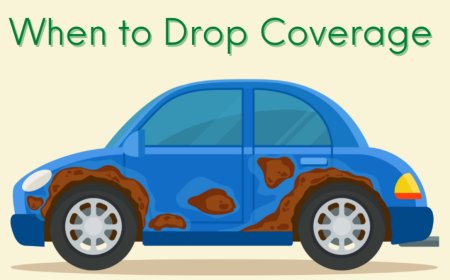Rust with a Cause: The Environmental Impact of Collecting and Restoring Old Cars
Discover how collecting and restoring old cars helps reduce waste, prevent pollution, and support environmental efforts across Brisbane and beyond.

Introduction:-
Old cars hold stories. Some sit covered in dust for decades, while others are found slowly rusting away in paddocks, backyards, and sheds across Australia. But these vehicles are not always left to decay. Many are being brought back to life through collection and restoration. While the idea of reviving old vehicles is often linked with passion, there is another side to itone that involves the environment.
The Rising Interest in Old Car Restoration
Australia has a strong culture of car enthusiasm, with events like car shows, swap meets, and restoration projects drawing crowds in nearly every state. As more people look into collecting and fixing old vehicles, there is a growing market for rare parts, restoration materials, and vintage accessories.
It is not just about preserving history. Many collectors are motivated by the idea of keeping something functional rather than letting it rot or be sent to scrap. Some restore vehicles to factory condition, while others turn them into modern drivables with updated engines and interiors.
Environmental Costs of Letting Cars Rot
Leaving old vehicles in open spaces has long-term environmental consequences. Over time, fluids like brake oil, transmission fluid, engine oil, and coolant can leak from worn seals and corroded components. These fluids often seep into soil and waterways, harming plant life and wildlife.
Here are some key facts:
-
One litre of used engine oil can pollute up to one million litres of fresh water.
-
Tyres left exposed degrade slowly and release chemicals into soil.
-
Batteries from old cars can leak acid and lead, which are harmful to both people and animals.
Abandoned vehicles are also fire hazards and can attract illegal dumping or vandalism. They may seem harmless at first glance, but long-term exposure to weather and corrosion makes them harmful to the local environment.
Giving Rust a Second Life: Environmental Gains Through Restoration
Restoring an old vehicle means bringing it back into use rather than building or buying a new one. This practice carries hidden environmental benefits, especially when it comes to conserving raw materials and energy.
Consider this:
-
Manufacturing a new car releases an average of 5 to 7 tonnes of carbon dioxide before it even leaves the factory.
-
Restoring an existing vehicle saves this production-related pollution and lowers the need for mining new materials.
-
Steel, aluminium, and copper recovered from old cars can be reused, reducing reliance on extraction.
By restoring rather than discarding, car enthusiasts are playing a part in slowing down the environmental impact of mass car production.
Sourcing Parts: Salvage and Reuse
Collectors and restorers often rely on parts from other vehicles, sometimes from swap meets or local wrecking yards. This reuse of materials extends the life of components that would otherwise be discarded or melted down.
Instead of using newly manufactured parts, which require mining, energy, and shipping, many turn to salvaged items. Engines, gearboxes, panels, lights, and mirrors from older vehicles often find a new home in restoration projects.
This approach not only saves money but also keeps working parts from entering the waste stream. It supports a cycle where every salvageable item is used again.
Community Efforts and Responsible Recovery
Not every old car can or should be restored. In cases where rust has eaten through the frame or the structure is no longer safe, removal becomes necessary. This is where local recovery programs become important, especially those that support safe dismantling and environmentally responsible recycling.
Programs focused on old cars collection Brisbane have grown in recent years, helping both individuals and businesses clear unused vehicles from their properties. These services ensure that collected vehicles are processed correctlyfluids are removed safely, reusable parts are salvaged, and metal bodies are sent for recycling. It prevents pollution while allowing materials to be reintegrated into future manufacturing cycles.
Efforts like these give a second purpose to vehicles that might otherwise be forgotten or left to decay in open spaces.
Challenges Faced During Restoration
While the benefits are clear, restoring old cars does come with challenges that need to be acknowledged from an environmental point of view. The use of paints, solvents, and rust treatments can release chemicals into the air and water if not handled properly.
Paint thinners, cleaners, and adhesives often contain volatile organic compounds (VOCs), which contribute to air pollution. Dust from sanding old paint may also contain lead, especially in cars made before the 1980s.
This means that those working on restorations need to follow proper safety steps and use materials that meet current environmental standards. Ventilated work areas, chemical disposal systems, and protective gear are all important parts of keeping the process clean and responsible.
Breathing New Life into Old Engines
Some restorers go beyond cleaning and polishing. They rebuild engines, update brake systems, and install emission-friendly parts. While this may not turn an old vehicle into a low-emission car, it still reduces pollution compared to leaving the car in decay or crushing it outright.
Converting classic vehicles to use cleaner fuels, or modifying engines to reduce smoke output, is becoming more common. These updates help old cars meet newer environmental expectations while preserving their original appearance and charm.
The Cultural and Environmental Balance
Restoring old cars is not just about mechanical skill. It is also about heritage. Cars that once travelled Australias highways, carried families, or served in industries hold meaning for many people. Collecting and restoring these machines brings that history back into view.
At the same time, it creates a space where environmental care and cultural memory can meet. Instead of building more, we are choosing to fix what we have. This attitude, when matched with proper safety and recycling steps, makes a real difference.
Final Thoughts
Old cars may look worn out, but they still have more to give. Whether through full restoration, parts recovery, or proper disposal, their impact goes beyond the past. Collecting and restoring vehicles supports both environmental efforts and community values.
When done right, this work stops pollution, saves resources, and brings life back to machines that once shaped everyday life across Australia. So the next time you see rust on a bumper or faded paint under dust, rememberthere is still purpose in that steel.








































